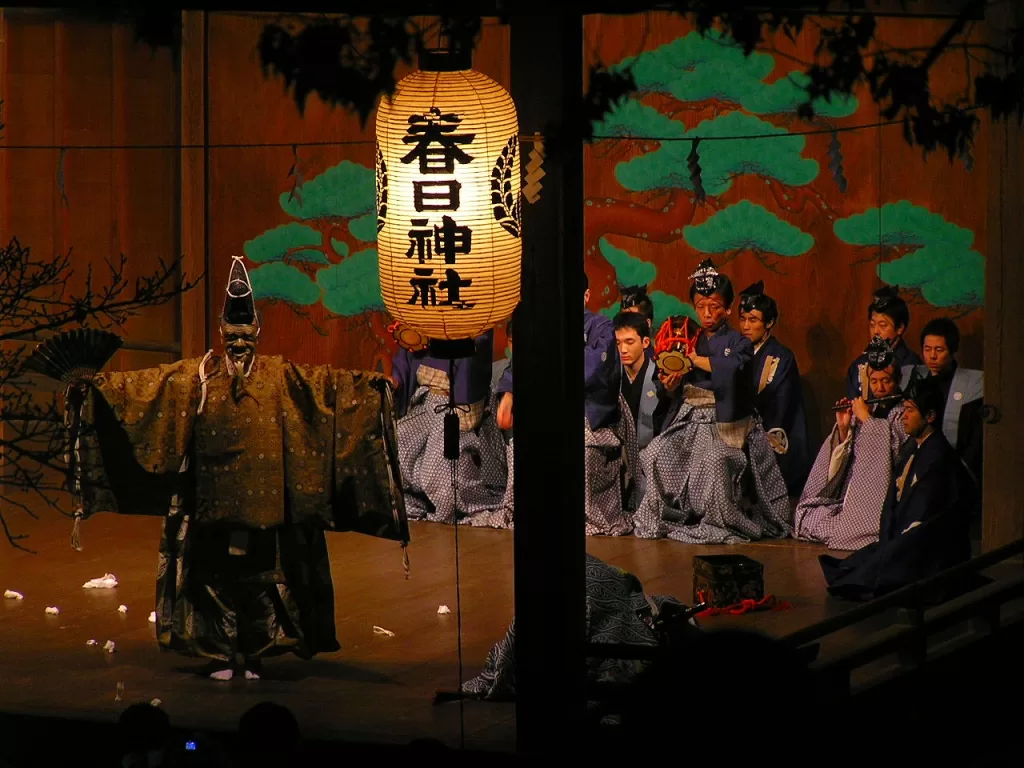Kyoto Takigi Nō: The Tradition of Firelit Japanese Theater
The History of Nō
Nō (or “noh”), an over six-century-old style of Japanese theater, is a distinct blend of narrative music and rhythmic dance. Actors don intricate costumes and masks, embodying roles of supernatural entities or fabled characters such as ghosts of tormented warriors and deities wandering among mortals. While the performances can span several hours, they usually feature four nō plays interspersed with kyōgen– a comic relief act.
A variant of these performances is conducted under torchlight known as takigi nō or Noh by firelight. In the ancient Japanese city, Kyoto, this tradition gains an annual spotlight on the 1st and 2nd of June at the dignified Heian Jingū shrine. It’s one of the most awaited Kyoto events in June.
The Annual Performance by Renowned Schools
Annually, esteemed nō schools – the Kanze and Kongō, alongside the Ōkura school of kyōgen contribute to five nocturnal plays on each night in this rustic open-air stage. Themes change annually and are reflected in the choice of renditions. For Instance, in 2015’s 66th annual performance, “The 120th Anniversary of the Founding of Heian Shrine: Feelings of the Gods & Winds of Prayer” was celebrated, whereas, in 2016 it was themed “A Prayer for Recovery and Peace for the Olympic Year”.
Tickets are priced at around ¥4,000 when bought beforehand and around ¥5,000 at the entrance. Informative booklets summarizing Noh’s world and its spellbinding tales are available for sale.
Increasing Accessibility
In recent years the emphasis has been laid on broadening understanding for non-Japanese audiences too. English language books detailing Noh’s themes are now available around seating areas during performances. Important addresses, such as those from the Chairman of the Nō Association are translated in real-time.

Immersing In an Enthralling Experience
Often referred to as Bonfire Noh (in Japanese: “Takigi Noh” 薪能), this event beckons attendees under the captivating presence of flaming torches and cool night air. This much-awaited event sells out rapidly; hence potential attendees are urged to buy tickets early to secure preferred seating areas.
In these performances, actors glisten under fiery lights donning lavish costumes and wooden lacquered masks contrasting sharply against a traditionally conservative setup. Intervals filled with comic kyogen theatre rife with dialogue and humor add buoyancy to otherwise intense narratives.

Tracing Back Time Through Takigi-nō
Immerse yourself into a cultural experience imprinted deep into history dating back to Shunigatsu-e religious ceremonies held every second month at Kofuku-ji temple in Nara more than a thousand years ago. Post World War II saw this tradition surged back to prominence becoming an integral part of Kyoto’s popular attractions drawing tourists year after year.
Adhering strongly towards revitalization trends and tourism goals set by Kyoto City, Heian Shrine was chosen as a fitting backdrop that commenced its first co-sponsored event with Kyoto City and the Kyoto Noh Association on May 23-24, 1950 creating an immersive connection between art lovers and cultural enthusiasts alike.
Another exciting event that’s happening in June is the Kifune Matsuri. The Kifune Matsuri is an enchanting annual festival celebrated at the Kifune Shrine in Kyoto, known for its rich history and association with water gods. This vibrant event brings together locals in a joyous celebration and prayer, continuing the traditions that have been cherished for over a thousand years.